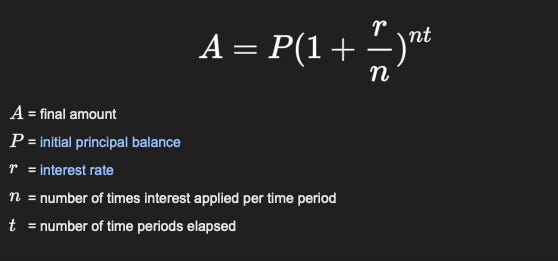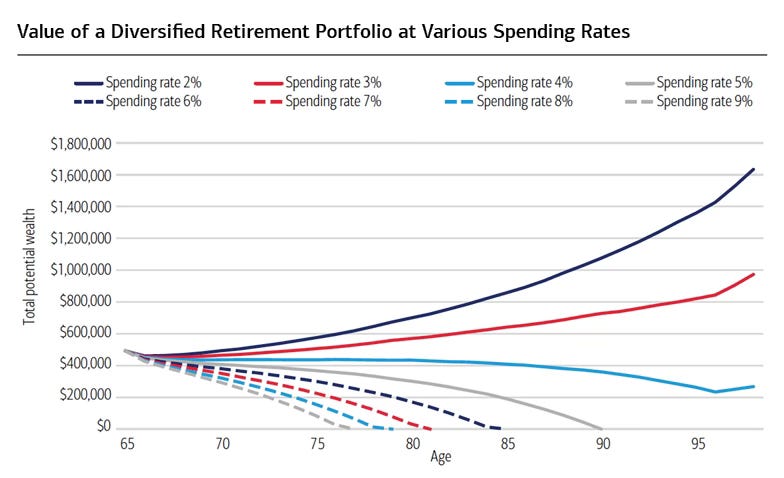For my birthday, I’m changing my mind.
I turn 34 in a couple weeks, and by many standards I’ve lived a lot of life in those years. 12 years in the Army, father passed away, started and closed 3 businesses, moved 31 times, made and lost about $2M…
Made my clients hundreds of millions of dollars.
Made my students some of the best in the industry.
Worked with & for some of bigger names in our tiny industry.
And there are still days where I feel like I haven’t done anything. Or accomplished anything. At least, nothing of note.
We all feel that way sometimes, I think. Inadequate. Self-conscious. Confused. Lost.
And when we feel that way, it feels like we’re alone in that feeling. While everyone else seems fine, we feel the worst.
It’s easy to point out: “hey man, everyone feels like you do sometimes”. But it isn’t helpful. Because no matter how much you KNOW you’re not alone in your feelings…that’s not how it FEELS.
When I decided to not do another copy mentorship in 2023, I was burned out. I’d hit the very frayed end of a very tattered rope.
I felt like I was alone. Confused. Inadequate. Self-conscious. Even with 50 people looking up to me every week in the mentorship. Even with friends flying me out to see me. Even with event leaders asking me to speak. Even with old clients telling me about their continued successes.
Feelings are powerful.
But feelings are also fleeting. They shift, morph, change, and pass through.
I felt like I never wanted to run a mentorship of any kind ever again.
Now, I feel differently.
But instead of letting a feeling make a decision, I created space.
I inspected the things that contributed to my burnout.
I watched the behavior I exhibited during periods of joy and periods of stress.
I studied all the ways my students and clients were responding to my help. The things I said that made a difference, and the things that didn’t.
And finally, I asked. My previous mentees and clients had amazing ideas and feedback for me.
The result was a new structure of mentorship. One that is sustainable, flexible, and has compounding impact on people. The longer someone stays in, the better their results.
How can that be possible?
First, you need to understand how compounding works.
Then, you need to see what the return on your investment (ROI) is.
Compounding is “The 8th wonder of the world” according to Albert Einstein. I wouldn’t go that far, but it’s definitely the key to understanding long-term growth vs. long-term decay.
Put simply;
Most people think of compound interest as “put money into the bank w/ interest, and you get more money back over time”
But money isn’t the only thing that compounds.
Skill compounds.
Your network compounds.
Your reputation compounds.
Now, look at what happens here:
Let’s say, starting today, you decide to invest $1000 per month into the S&P 500. Currently, the average return over the past 32 years has been 10.48%.
This is how much you’d make in 30 years. *Notably, it would take 21 of those years to break $1,000,000.
You’ll have invested $360,000 of your own money, and you got a return of $2.53 Million over 30 years. That’s a pretty good ROI (Return On Investment)
But here’s the kicker…
That $1,000 isn’t doing anything else. It’s just sitting in an account. It’s not making your life easier, it’s not bringing you joy, it’s not helping you grow as a person. It’s just sitting there, hoping that someday, you will return. That money is “gone” for 30 years. Unusable. Sure, you can pull it out early if you’re in a pinch. But at a HEAVY tax burden, plus completely destroying the compounding interest…thus missing the whole point.
While you’re waiting 30 years for your millions, you’re spending every single day working, living, striving, growing, and existing. The average lifespan in America is 76 years. That means 40% of your life was lived while waiting for your ROI.
And in the meantime, you’re investing energy. Time. Extra money. Reputation. All the things we don’t measure, but actually make up your entire life.
Your investment of $1,000/mo fails to improve your life for 40% of your life. Then, on average, if you retire at 65 and live to 76, you have 11 years to enjoy your $2.53 Million. That’s $250,000 a year. If you live longer, it’s less.
Every single retirement chart looks like this one:
Starting with $500,000, if you spend less than 3% per year, your money will grow. Everything else will decay.
That means you need to live on $15,000 a year for at least 15 years before you get the privilege of living at $20,000 a year…eventually capping out at $48,000 a year.
There’s an entire industry of financial planners, bankers, podcasters, writers, and experts who try to min-max this equation…but the fundamentals are still the same. Ultimately, you invest money that becomes useless until you pull it out, and once you pull it out, you’ll have about 1/3 of the time and 2/3rds of the income you previously had.
Let’s imagine, instead, that you spend $1,000/mo investing into yourself.
$1,000 a month improving your skillsets
$1,000 a month improving your professional network
$1,000 a month improving your reputation and personal brand
$1,000 a month improving your capacity to generate income
$1,000 a month in receiving joy, fulfillment, and purpose in life (through donating, volunteering, giving, planning family/friend events…the list goes on)
Every single month, your investment has an immediate impact on your life.
Every single month, the compound interest on your investment accumulates even if the money is gone.
If you spend $12,000 a year on yourself, and you end the year with $12,000 less in your bank account…what was the ROI?
The skills
The relationships
The memories
The reputation and influence
The joy
And that’s assuming, very conservatively, that none of those things earned you any money. Which is silly, but I’m trying to make a dramatic point here.
Sometimes we view investing in ourselves as frivolous. Or ‘extra’. But that’s because we don’t measure the intangible return on those investments. We assume the money we invest in retirement isn’t ‘gone’, but its only utility is to sit for decades. We sacrifice an entire lifetime for a small % of tangible return.
We need a new model.
Which is why I built this new mentorship structure.
I won’t insult you by implying that my mentorship is the only way to invest in yourself. It’s not. I will say, directly, that I designed it with fundamental principles of growth.
It solves every problem that current coaching and consulting methods have:
Instead of trying to shove everyone into the same system, it flexes to work for a person’s unique edge. (Organic systems are replicable, not scalable. They work for everyone because everyone is unique)
Instead of ending at a single outcome, it grows with every person. A fundamental structure of the Mentorship is Playing An Infinite Game, where the main goal is to keep playing the game.
Instead of getting less effective with more people joining it, the effectiveness is exponential: 1+1 = 10. Instead of market saturation, you’ll see market proliferation.
Instead of losing value over time, your purchase increases in value. It’s the first education product that actually functions like an asset. (You will retain access to all content and replays that occurred through your membership if you choose to leave. Plus, you will always be an ‘alumni’ who gets special privileges, making your membership more valuable as time goes on.)
If the model is copied, everyone wins. The collective growth is higher than the individual competitive advantage. (Yes, you can ‘relaunch’ your own Mutual Mentorship, use the exact same structure, and it won’t harm the original. In fact, I’ll help you do it if that’s aligned with your goals)
Many will say this is impossible. Especially people who’ve been in the industry or had success before. They’ll scoff at it, or ignore it. It breaks their view of reality, because it operates outside their “zero sum game” reality.
Luckily for the first few “believers”, it’s not impossible. In fact, it’s effortless. The structure adheres to the actual laws of physics, the actual principles of life. It uses the same energy that makes plants grow, water flow, and planets spin.
Sound woo-woo? Good. It scares away the skeptics, and skeptics are never innovators.
I’m calling it a Mutual Mentorship.
I’ve only talked about it to my most recent mentorship class. They got first dibs on the “Early Founder” price and spots.
There are still some Early Founder spots to be had. Once they are gone, the price goes up to normal and stays there (I don’t plan to increase it after that)
There will only ever be 60 members. The first 20 get “Early Founder” status and pricing. The remaining 40 will pay normal price.
Once it’s full, there will be a waitlist to join. As people leave, spots will open up.
The minimum membership period is 6 months, but like I’ve said…I intend for people to want to be members for a long time. The value continues to compound the longer you’re in it.
In the coming days and weeks, I’m going to be sharing a lot about this Mutual Mentorship. The philosophy, principles, strategies, tactics, and tools I’m using to grow it. The reasons why I’m doing it now. The changes in the market (and the world) that require this kind of change.
But if you are interested in joining, or you want to grab one of the few Early Founder spots, you can email me directly by replying to this article.
It’s likely that there isn’t enough information in this article for anyone other than true Innovators to want to take action. And I understand. So I will share more info, more stories, and more successes as we go. Innovators take risks and reap the early rewards, so if that’s you, I’ll talk to you soon.
Until tomorrow,
-Lukas







exciting. looking forward to seeing this unfold
This looks amazing!